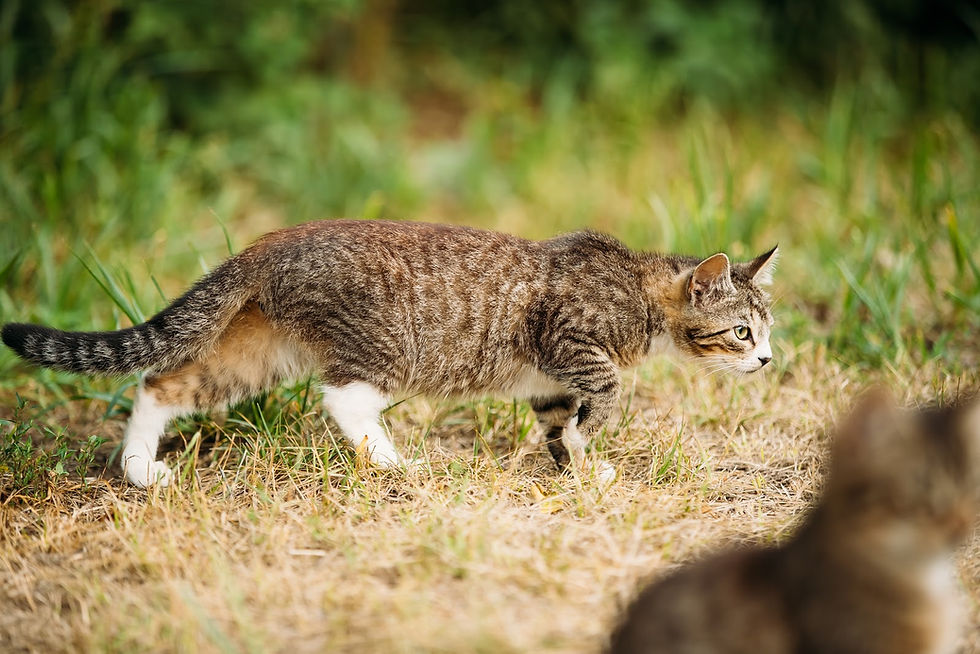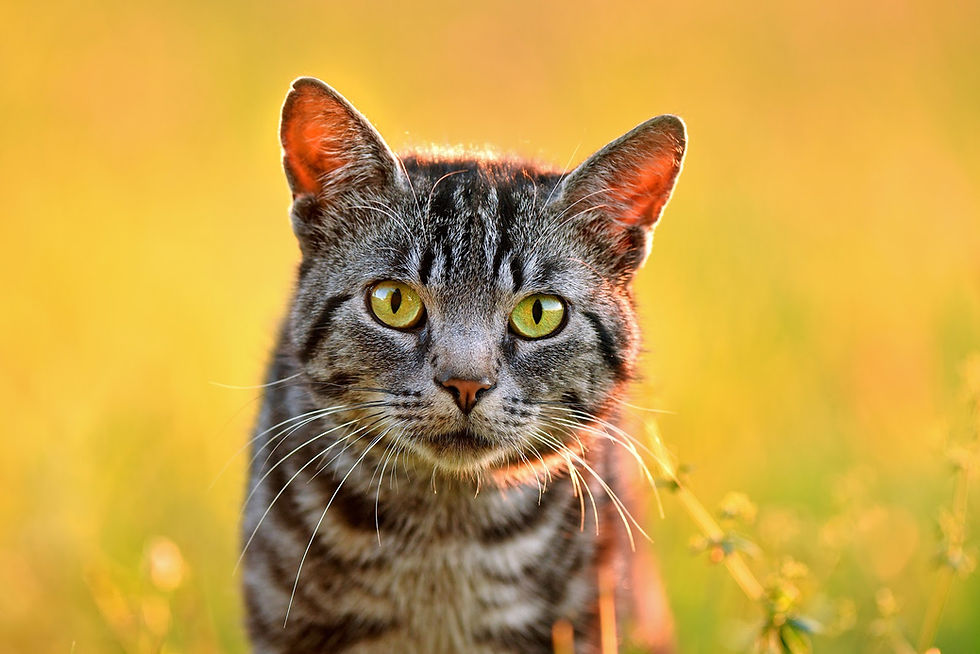How Do Cats Impact our Wildlife in Australia?
- Erica Jeffrey

- Jan 15, 2020
- 3 min read
Updated: Jan 14, 2021
It’s estimated that there are now 3.9 million domestic cats and between 2.1 - 6.3 million feral cats in Australia. We all love our cats and couldn’t imagine our perfect little fluff balls being swift and silent killers when we have our backs turned. But the truth is, cats are having a large impact on our Australian wildlife and without taking action we will continue to see the decline in the population of our wildlife and possible extinction of more species. All this extinction talk may sound a little dramatic but Australia has the worst record for mammal extinctions in the world. Over thirty mammal species have become extinct since European settlement, with cats being a leading cause of extinction for at least 20 species.

Pet and feral cats together are killing over two billion reptiles, birds and mammals per year in Australia.
In addition to cats directly preying on native wildlife they can also spread a disease called toxoplasmosis, which when contracted by native wildlife can lead to their death.
Taking action as a domestic cat owner will help us preserve our unique fauna. Cats are natural predators, and even domestic cats still have their primal instinct to hunt and kill. The good news? There are easy steps we can take as cat owners to minimise the impact on our wildlife.
Keep Your Cat Safe and Entertained at Home

Not letting our cats roam outdoors is the best way to completely eliminate the risk they pose to wildlife. Containing our cats is actually the BEST thing we can do as pet owners to show our cats just how much we love them. It reduces the risk of picking up a disease, being injured or killed by a car, getting into a fight with another cat, or disappearing and never coming back. It’s a win/win for everyone, your cat stays safe and healthy, you never have the expense or heartbreak of an injured cat, and our wildlife remain untouched. You might worry your cat will get bored if it’s contained indoors 24/7 and that’s why we wrote up a blog on how to keep your indoor cat entertained and occupied. Another option is to give your cat access to an outdoor cat enclosure.
Desexing

We’ve spoken about the importance of desexing our cats in the past. Ensuring our cats are desexed will help to reduce the population of stray and feral cats, which have a large impact on our native wildlife. If you’re hesitant to desex your cat, we would recommend reading our blog to ease your worries.
Cat Ownership

Becoming a pet owner is a big responsibility, not only are you responsible to love and care for your pet, but you also become responsible for taking action to conserve our Australian wildlife. You might be thinking, “My cat isn’t a killer”, but you would be surprised by what your cat is doing when you’re not watching. A study released in 2020 suggests that on average a roaming domestic cat will kill around 186 animals per year, including birds, mammals and reptiles. Cats have a natural prey instinct which we can’t control, but we can control the impact they have on our wildlife by taking simple steps such as having our cats desexed and keeping them safe at home.
Being a pet owner is really rewarding and we are passionate about responsible cat ownership. If you love cats, you no doubt love all animals and wildlife just like us. If we all work together we can have a huge impact on reducing the numbers of wildlife killed by cats. We encourage you to share this article with your cat loving friends and family via social media so we can all work together to take action!



_cropped.jpg)
Comments